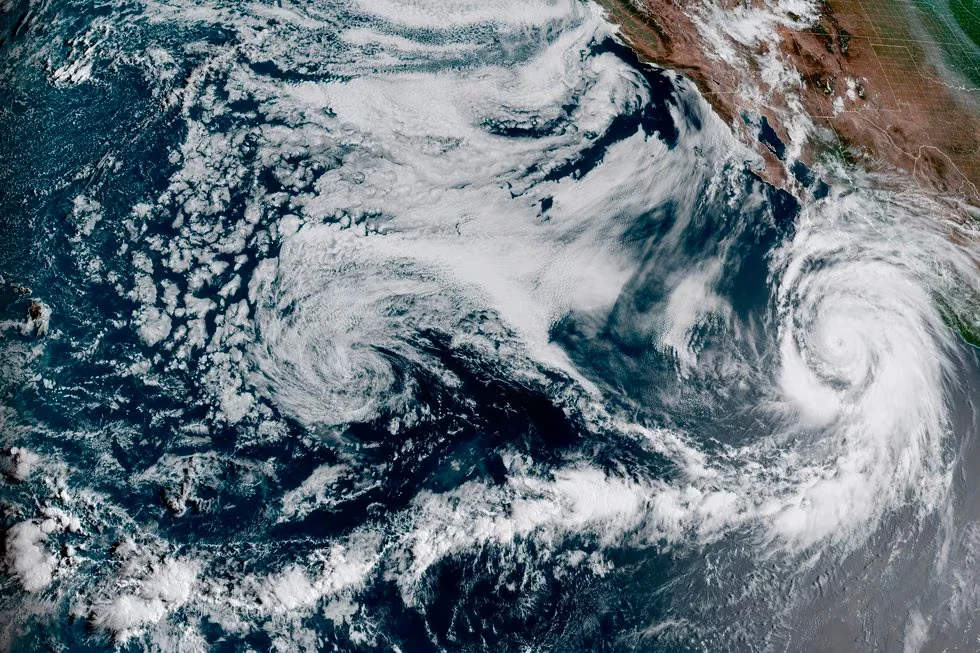California is bracing for the impending arrival of Hurricane Hilary, marking the first tropical storm to make landfall in the state since 1939. The hurricane rapidly escalated to a Category 4 strength on Friday, sending shockwaves through meteorological circles and sparking urgent preparations across the region.
The storm’s trajectory is projected to intersect with the Mexican peninsula on Saturday night, before heading towards Tijuana on Sunday and eventually making its way to southern California. While Hilary is expected to weaken slightly as it transforms into a tropical storm, the United States National Hurricane Center is issuing a grave warning of “catastrophic and life-threatening flooding” for areas in its path.
As the nation grapples with this extraordinary weather event, the US Navy has taken proactive measures by dispatching several warships to San Diego Bay. Their mission is to manage and safeguard boats within the port, ensuring their safety amidst the impending deluge.
Anticipating the potential for widespread devastation, authorities in Los Angeles are working tirelessly to establish shelters and relocate homeless individuals from vulnerable areas near the city’s dry riverbed. The possibility of flooding has spurred urgent action to mitigate potential harm.
The issuance of a tropical storm warning has cast a broad net of concern over extensive portions of Southern California, encompassing the Pacific coastline, interior mountains, and desert regions. Catalina Island, situated near Los Angeles, has entered discussions regarding evacuation plans due to the looming threat.
Despite the familiarity of natural disasters in some parts of California, the arrival of Hurricane Hilary is a unique event that has triggered a heightened sense of urgency and anxiety. The storm’s trajectory and potential consequences underscore the need for swift and efficient emergency response strategies.
Even as Hurricane Hilary experiences a slight reduction in momentum, it remains a formidable Category 4 storm with sustained wind speeds of up to 130 miles per hour. Its current location, approximately 240 miles west of the Baja peninsula’s southern tip, signals a northward trajectory at a speed of 13 miles per hour.
Experts express particular concern over the likelihood of heavy rainfall leading to dangerous flooding, particularly in Tijuana—a city that is prone to flooding due to its proximity to the border and unique terrain. With approximately 1.9 million people residing on steep hillsides, the threat of landslides amplifies the peril.
Taking proactive measures, Montserrat mayor Caballero Ramirez acknowledged the city’s vulnerability and has initiated the setup of shelters in high-risk areas while issuing warnings to residents in the storm’s projected path.
As the storm approaches, the National Park Service has opted to close Joshua Tree National Park and Mojave National Preserve to mitigate the risk of visitors becoming stranded in potential flooding scenarios.
Ahead of Hurricane Hilary, various cities throughout the region, including neighboring Arizona, have distributed sandbags to residents to protect their properties from the anticipated floodwaters.
In preparation for the storm’s impact, the Los Angeles Sheriff’s Department has actively encouraged homeless individuals residing in dry riverbeds to seek refuge away from the storm’s path.
Offering assurance amidst the uncertainty, President Joe Biden confirmed that the Federal Emergency Management Agency (FEMA) is fully equipped with staff and resources to tackle the impending threat. Stressing the importance of following guidance from state and local officials, Biden underscored the necessity for readiness and vigilance.
As Hurricane Hilary inches closer, California is adopting a heightened state of vigilance, reinforcing sand berms along vulnerable coastal areas, and readying sandbags to protect properties. This unique event serves as a poignant reminder of the interplay between communities, infrastructure, and the raw power of nature. As California readies itself for an unprecedented event, its resilience, and response are being closely watched by the nation.




